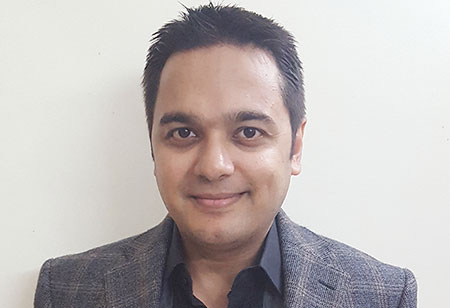An Overview of the Medical Devices Sector in India
By Mohit Bajaj, Director, Sisco surgical instruments, Sisco latex

Mohit Bajaj, Director, Sisco surgical instruments, Sisco latex
To say the pharmaceutical industry dwarfs its younger brother the medical devices sector would be a massive understatement. India, the land of pills has embraced allopathy with open arms for many years. But it is the other hidden dark horse, the sleeping giant which has often gone unnoticed year after year and budget after budget. The medical devices industry was expected to grow leaps and bounds with the mass emergence of corporate hospitals but regulations, poor management and rising costs of manufacturing and supply has deterred it reaching its expected heights.
The winds of change are here. India has finally emerged as a quality centric hub for medical devices and through all the right certifications there has been a paradigm shift in the image and purchase of medical products in the global and Indian sector. Well established brands are now heavily investing in research and development along with cost cutting measures to offer a high quality product at a very affordable price. Furthermore the separation from the poor image of China has allowed Indian medical products to now OEM manufacture for most leading European and American brands. Not forgetting our own the Indian medical devices manufacturing association has tied up with the Indian regulation authorities to form an Indian “FDA” which restricts the mass import of unregulated medical devices into India. This prevents dumping of goods and safeguards the local industry while still offering high end quality medical products. These stringent laws have given hope to the various small and medium scale medical device manufacturers to invest further and develop their product range.
Perhaps the biggest advantage of this all has been the entry of the multinationals which have made India their hub for the Asia pacific region for going their long association with expensive centres such as Malaysia and Singapore. This has allowed them to manufacture their high end medical products in India and set up sprawling corporate offices in most major cities. They have provided their high quality products to mass government hospitals allowing an upgrade in the treatment of the masses. This foreign investment has gone hand in hand with the local industry and many medical device manufacturers have set up accessory manufacturing to compliment these products.
These manufacturing companies are now governed by the ISO 13485 certification where the company needs to demonstrate its ability to provide medical devices and services which must consistently meet customer and applicable regulatory requirements. These certifications which are carried out by an independent audit have allowed most manufacturing units and service centres to maintain a consistent quality and penetrate broader markets. These guidelines are applicable to companies irrespective of their size and regardless of their type thus allowing a general consensus to bring all medical device companies under one umbrella. With the recent updated guidelines of ISO 13485:2003 to the recent ISO 13485:2016 companies have been forced to adapt to newer requirements and rules to follow to continue with this coveted certificate. With these certifications in place it has been easier for Indian companies to apply for their CE (Conformite’ marking) certificate which allows them to sell their product in the European union and also go for the FDA (Federal Drugs and administration) certificate which allows them their first step into the United States market. A recent survey conducted showed that India requires 600,000 to 700,000 additional beds over the next five to six years, indicative of an investment opportunity of 20 Billion US$. Given this demand for capital, the number of transactions in the healthcare space is expected to boom further with the rise of more hospitals, clinics, nursing homes and surgical centres.
These steps though significant are still small and there is a long way to go before the Indian medical devices market reaches the heights it is destined to. Even after a substantial growth in the last decade there is still a need for the local medical industry to step up. India ranks fifth in the world for the largest purchaser of medical devices but yet there is a dire shortage of goods in lieu with the demand. Unregulated import through different channels has flooded the market causing great strain to local manufacturing. Furthermore the rise of the middlemen between manufacturers and clinics, nursing homes has caused the prices to the patients to be at a very high premium. The government sector still has a long way to go to catch up with the private sector and the slow development of the primary health care centres across rural India is a cause of concern.
With medical care and the quality of life improving in India it is only a matter of time before the medical devices sector establishes itself among the top Indian manufacturing and service industry. It has now emerged as a land full of opportunity for players in the medical devices segment. The country has also become a leading player for high end diagnostic services and there has been a substantial capital investment to cater to the great population. There has also been a strong rise in the medical tourism segment with India emerging as a top destination. India’s greatest competitive advantage lies in the low cost, high quality and effective treatment and it in inevitable all focus must be used to develop this strength. To sum it all up, there are vast opportunities for investment in the medical devices sector which can cater to the medical infrastructure in both urban and rural India.




